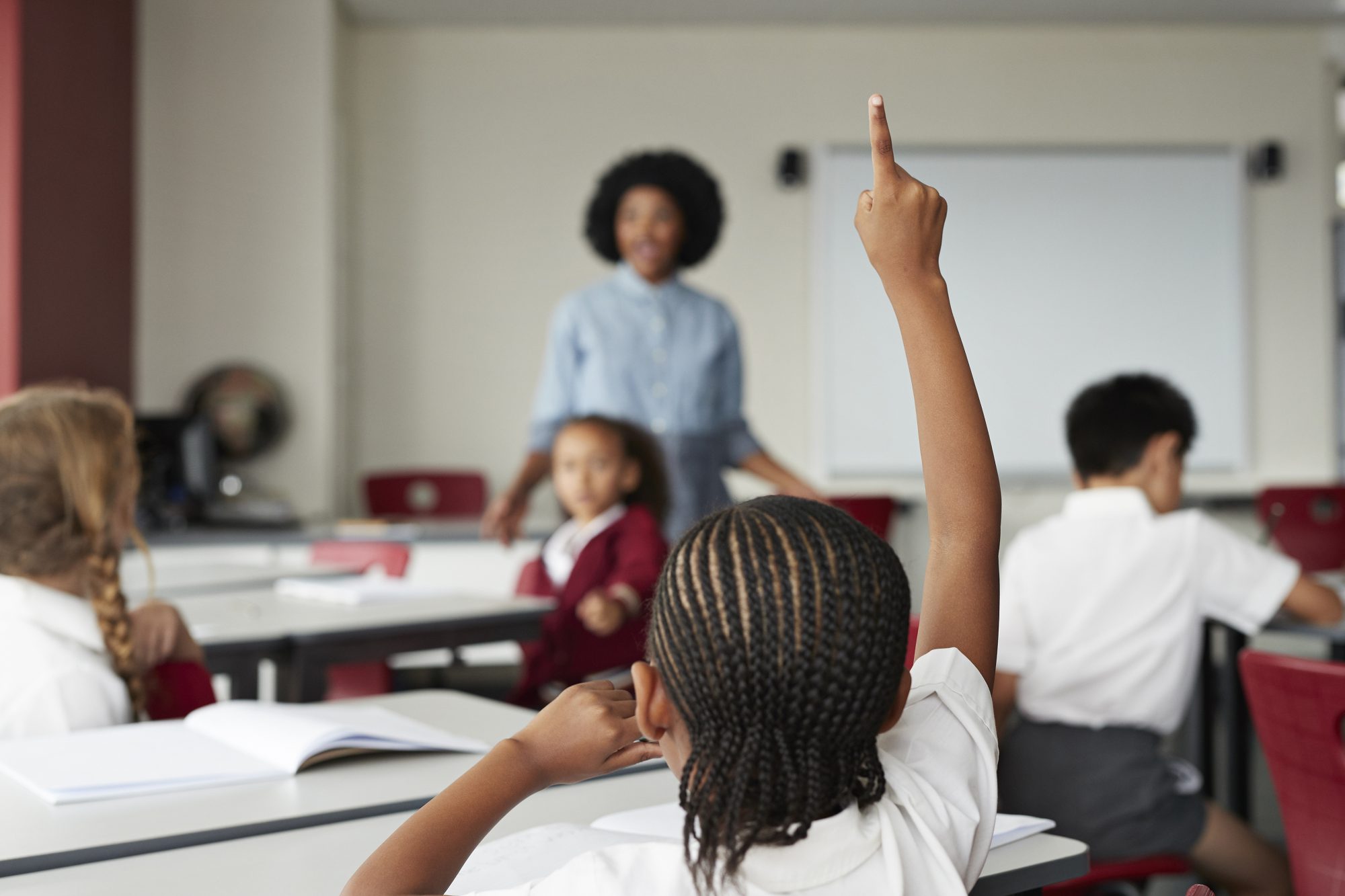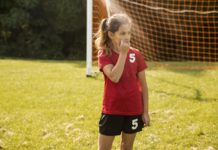
It happened on the yellow bus. I was 9, in fifth grade, and the only Black girl riding to North Side Elementary School. I was the only Black person in the whole school, as far as I know. I felt utterly alone as a brown-haired, freckle-faced white boy laughed, pointed, and called me the N-word, over and over again. I will never forget his face contorted in a menacing smile.
I was paralyzed. I suppose my face was distraught. Gradually, my friends on the bus told him to leave me alone. He moved on, but I never did.
Racism affects the physical, emotional, and mental health of those who experience it. Black children experience racism long before white children learn about race. Yet, the national conversation about when and how schools teach the history of racism in America doesn't focus on the victims of racist systems, policies, and people. Children who experience racism, either directly or vicariously, experience personal, real, felt harm because of it. They suffer. Why, then, is the conversation focused on the feelings of those who will never experience the torture of racism?
Maxe Hinds is a junior at George Washington University. An International Affairs major with a double minor in dance and French, Hinds attended the International School of Brooklyn (ISB) from first to eighth grade. Because ISB is an International Baccalaureate school, Hinds was educated in a French immersion program for eight years and gained fluency in French at a very young age. After she graduated from ISB, Hinds attended one of the highest ranked independent day schools in the country, the Dalton School, where she graduated in 2019.
None of the privileges associated with her background and education created a safe space for Hinds. "Every single year that I was at Dalton, at least one racially motivated incident occurred," Hinds says. When she was just a sophomore, about 10 screen captures of a white student using racial slurs were sent around the school. "Every single screenshot contained the N-word, and one photo, in particular, was of him impersonating the KKK," she says.
Because racism persists as a vile system of exclusion and degradation, institutions like Dalton don't have the systems to effectively manage racism, even when it surfaces in an explicit, unambiguous way.
The student caught using racial slurs was not expelled. Hinds says the student was "asked to leave and ended up at a very good school somewhere in the UK." Because the school didn't expel him, he went on without a record of the racist behavior. Hinds, however, was left with emotional scars. Without some form of justice, either punitive or restorative, there is no real lesson learned. More importantly, Black children bear the weight of white adults' decisions. "I felt violated after this incident and did not feel like Dalton made any efforts to protect their Black students," she says.
Dalton is not an outlier. Racism is inescapable in schools because racism is inescapable in society — even in schools where adults believe that everyone gets along are affected. A 2019 Southern Poverty Law Center questionnaire found that while two-thirds of educators who responded said they "witnessed a hate or bias incident in fall 2018," fewer than 5 percent of those witnessed attacks were reported in the news.
Hinds first experienced microaggressions when she was even younger, at about 5 years old. She remembers a white girl who kept pointing out how much darker her skin was than her own. "Though this obviously wasn't a racist encounter, it made me feel different or other at such a young age," she says. Hinds reflects that she can't recall one distinct moment when she first experienced racism. "In one way or another, it has always been a part of my everyday experience."
Children's experiences with racism physically harm them. In 2019, the American Academy of Pediatricians published a policy statement that declared, "Racism is a social determinant of health that has a profound impact on the health status of children, adolescents, emerging adults, and their families."
Black and white educators are trying to do the work, despite the polarizing tensions of the CRT debate. Indeed, Black educators have been doing the work of supporting Black children long before the debate even started. Patricia Hogan Williams is head of the nation's largest private Christian school with a predominantly Black population, the Imani School in Houston, Texas.
Williams says that racism is insidious and shows up in schools in many ways. "It is transmitted by words spoken and sometimes most clearly by words not spoken," she says. "The choice of textbooks, the pictures on the walls, the songs that are sung, the history that is taught or not taught — these are parts of the hidden curriculum that tell a student that you belong or that you are not worthy." In the teachers' workroom at the Imani School, Hogan has a sign that says, "No malice is required to destroy a child."
"The subtle ways a teacher speaks, the way she responds when a student gives the wrong answer — these are things that often go unnoticed, and certainly not reported, but the impact is real, and it is lasting," she says.
Though Williams and her husband raised their three sons in Houston, she grew up in a small Texas town where, she says, racism was like air. "It was all around all the time," she says. "There were signs on the water fountains in the courthouse and anywhere else there was a water fountain or restroom that said 'colored' or 'whites only.' Boys were always told not to look at white women on the street."
Educators across racial lines want to teach this truth in validating ways. Shannon Macaulay is a white English teacher at Meadowbrook High School in Chesterfield, Virginia. She says that Meadowbrook's student population is more than 90 percent people of color, primarily Black and Latinx. Macaulay runs the yearbook and journalism programs in a classroom that reflects the school's racial demographics.
"I absolutely do not agree that learning about racism and America's racist history will harm white children," she says. "I read statements about white children being told that they are bad because of our history of slavery and racism, and I really wonder where that is happening or if it's a fear that's being pushed."
Macaulay says that "anything that addresses cultural relevance, equity, or allowing voices other than white voices to enter the discussion" is thrown under the CRT umbrella by opponents.
"I wonder why so many white parents are afraid of opening the discussion to all voices and all members of our communities," she says. "We are better together, and I have a hard time understanding a point of view that doesn't get that."





